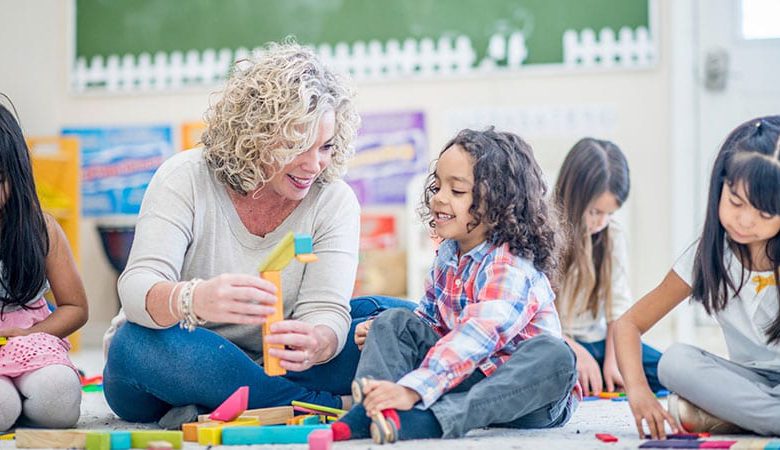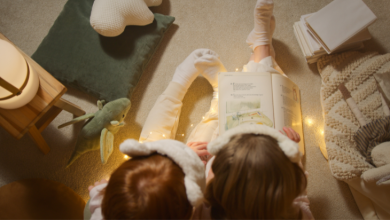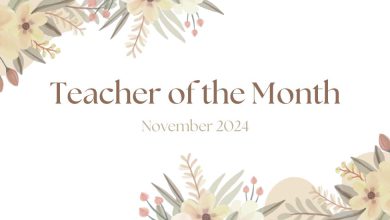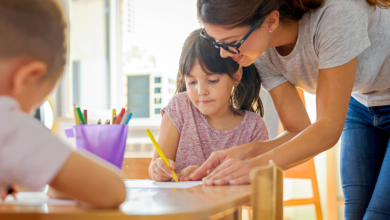Children Are Capable: Principles of Reggio Emilia

Children Are Capable: Principles of Reggio Emilia
Think back to your favorite class in school. It can be as far back as kindergarten or more recently as high school or college. Do you get warm-fuzzies thinking about Mrs. or Mr. So-and-so and their classroom? Do you remember feeling relaxed and happy to be there?
Now think about your least favorite class. The stress you felt just sitting down at your desk. The knowledge that the next forty minutes was going to be terrible. The desire to check out and put your head on your desk until it was over.
There are lots of reasons kids do and don’t like certain teachers or classes. But a big part that plays into both outcomes is how involved kids are in their own learning.
Engaged Kids = Engaged Minds
We wholeheartedly believe that a child who is actively involved in the learning process — both physically and mentally — learns more and learns it well.
The first principle of the Reggio Emilia philosophy asserts that children can construct their own learning. That means children deserve to be in the driver’s seat when it comes to their learning and should be treated as active collaborators in their education and not just inactive blobs that sit in chairs.
Think back to your favorite class again. Chances are what made it great was the teacher made sure you were engaged as a student. Switch gears and think about your least favorite class. Chances are you felt talked at instead of talked to or with. Reggio Emilia educators actively involve their students in deciding what they learn and how they learn it.
At this point, you may be imagining a scenario where the children have locked their teacher in a closet and taken over the classroom. Don’t worry, that’s not what’s happening! With Reggio Emilia, children follow their own interests within a framework of activities directed by the teachers.
Collaboration Is Key
Truly engaging with children is important, but Reggio Emilia curriculum takes engagement one step further. At Little Sunshine’s, teachers strive to collaborate with the kids in their classrooms. The Reggio Emilia approach wants to make sure each child’s voice is heard to promote a sense of belonging to the group and a sense of self.
Collaborating with kids is the same for our teachers as it is for adults who are collaborating in the workplace. Say you have to work with Karen in your department to get a project done. Karen is a competent person who has good ideas and brings a lot to the team. (If there’s a Karen in your workplace who doesn’t fit this description, feel free to change the name so it doesn’t spoil the analogy.) When the two of you sit down and begin planning, the mutual respect you have for each other will lead to collaboration, aka working together to produce something great.
But what if Karen tells you how the project will go? Instead of asking for your thoughts and opinions, she’s already assumed that her plan is the best one and your role is to agree and fall in line. Does that make what Karen is saying wrong? No. Does that mean she’s missing out on all of the ideas and contributions you can make to this project that would make it even better? Absolutely! Karen needs to calm down, show you some respect, and involve you.
We feel the same way about the kids in our classrooms. While we have a structure we use to guide them along in the learning process, teachers make sure to listen to the kids as they contribute to the learning process.
Why? Because kids have great ideas!
Reggio Emilia Approach in Action
Here is a great example of collaborating with kids and creating awesome learning opportunities.
Preschoolers at a Reggio Emilia school decided they wanted to learn about the solar system and space travel. Why? Because they all had Star Wars toys and books at home and the idea of space was interesting to them.
So what happened? They got creative! While their understanding of how the physics of space was off (let’s be honest, how many of us adults really understand something like that), the creativity they showed in the space stations they made and the rockets they constructed made them even more excited about the planets, stars, and outer space. They began asking questions, got curious about space-related things, and expressed that excitement through the games, music, and art they created. Instead of being told it was “too advanced” or subjecting them to a lecture on the order of the planets, these kids’ love for the topic could lead to any one of them advancing their love of science as they grow and learn.
Fostering Capability
At Little Sunshine’s, we wholeheartedly embrace the concept of kids being capable, should be involved in the learning process, and are valuable collaborators. We see the value they bring to their own learning environments and see how much good comes from listening to them each and every day.
This post is the first in a series that takes a deeper dive into the Reggio Emilia approach. If Reggio Emilia is new to you, don’t worry! We already have some great resources that you can use.
Reggio Emilia Philosophy: This one-stop-shop gives you the information you need if you are brand new to Reggio Emilia. The videos are particularly good, if we do say so ourselves.
What is the Reggio Emilia Philosophy?: A quick blog post that summarizes key parts and concepts of Reggio Emilia.





